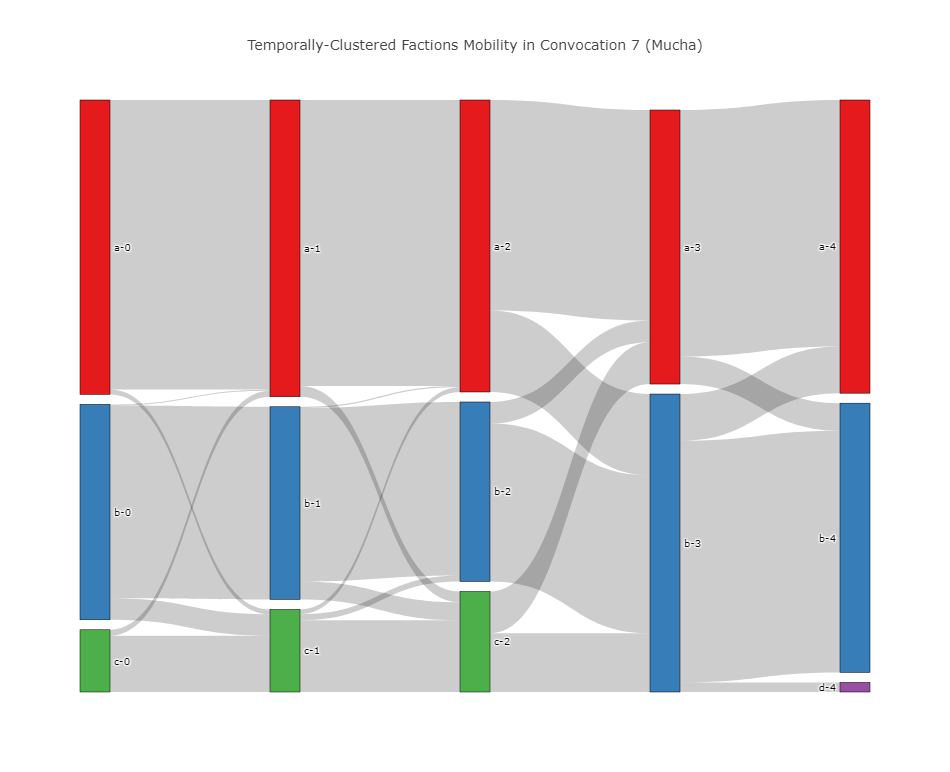FACTIONS
Near Real Time Assessment of Emergent Complex Systems of Confederates
Overview | People | Collaborators | Sponsors | Publications | Tools
Factions are defined as a groups of political actors who are held together by ideology dissenting from that of each other. The project has three main phases: detection, dynamics, and influence. In the detection phase, algorithms and metrics were developed which define factions from a dataset. Once factions were defined, they are analyzed dynamically to find mergers and breakage. Finally, agent-based models are developed that empirically agree with behavior seen in faction dynamics. These models can then be experimented on to determine successful strategies for faction influence. By the end of the project, a variety of interoperable tools will have been created capable of identifying factions from an assortment of datatypes, then see how those factions have changed in time.
A major goal of the project is to use legislative voting data to analyze factions within a government, specifically, Ukraine. One of the methods developed for this problem is the MacRae Faction Detection Method [1]. This method combines traditional political theory with modern network science to make a well-grounded but objective faction detection algorithm. MacRae's theory was that factions are created on the basis of issues, or groups of bills that share a common topic. As such, we use Yule's Q to calculate the similarity between bills, and use the Louvain grouping algorithm to find issues. From here, MP's position on each issue is determined through MacRae's scaling procedure. Once the scores are calculated, the pairwise similarity between all MP's is calculated. Finally, Louvain grouping is used on the similarities to define factions.
Results from faction detection and dynamics are best visualized using a Sankey Diagram. This diagram shows flows between groups at different time-slices, giving us some ability to see when factions merge or break apart. A faction detection algorithm was applied to Convocation 7 of the Ukrainian Parliament, the Verkhovna Rada. The method was applied at the sub-convocation level, so factions are defined at 5 different time slices. Then, two factions were considered "the same" if they retained at least 50% of their members from the previous time slice, and they were not absorbed by a larger group. With this definition, the Sankey Diagram shown below was created. This diagram shows interesting faction dynamics. Initially, there are two dominant factions and a small tertiary group. Faction A is slightly larger than Faction B. There is not much mobility in the first two sub-convocations, but there is a dramatic change in the third. In this change, a large group of Faction A members switch to Faction B, at the same time, Faction B absorbs the tertiary faction, giving it a majority. This result demonstrates our current ability to find factions and determine their changes, including dramatic changes in the balance of power.

Figure 1: Sankey Diagram of Factions in Convocation 7




